These are all the roads in Lancaster and Morecambe to be resurfaced this year - and how much more Lancashire needs to really improve its highway network
and live on Freeview channel 276
Lancashire County Council has calculated that the annual “sustainable investment” needed to achieve such an ambition would range between £51.9m and £56.2m, after recently rocketing as a result of the soaring cost of the necessary materials.
However, County Hall is in line to receive a highways maintenance grant from the Department for Transport (DfT) for 2023/24 of just £28.1m - the same amount that it has been handed for the last two years.
Advertisement
Hide AdAdvertisement
Hide AdThat total largely excludes the budget for fixing potholes and other defects which appear unexpectedly during the course of the year - and into which the authority expects to sink a further £9m in the 12 months from April.
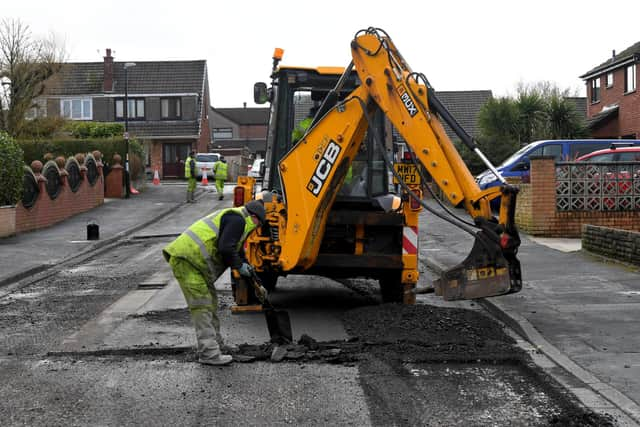

The potholes funding pot has this year been bolstered by an extra £1m agreed when the county council set its overall budget last month - continuing a trend in recent years for more money to be set aside for so-called “reactive” repairs.
However, a report presented to cabinet members laying out the scheduled works for the year ahead revealed a growing gap between the amount available to fund it and what would be required to “improve the asset condition”.
Prior to the spike in inflation over the last year, that figure had been estimated to stand at £43.3m - still over £15m short of the DfT grant given to the county council, notwithstanding the fact that the authority has long qualified for the maximum amount of government “incentive funding”, provided as part of the maintenance cash, in recognition that it makes the most effective use of the highways money that it does have at its disposal.
Advertisement
Hide AdAdvertisement
Hide Ad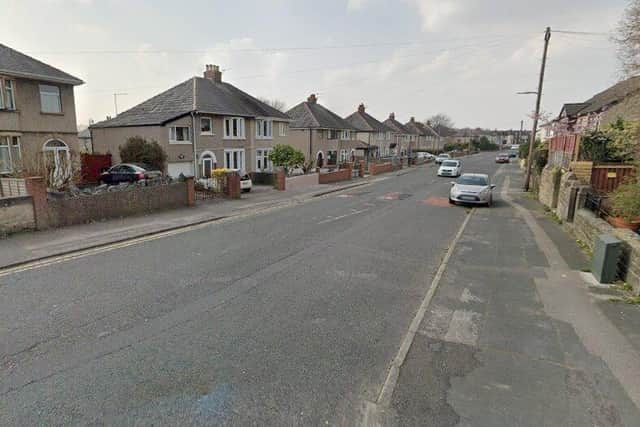

The cabinet report also noted that the county council would now need between £41.7m and £45.2m just to manage the highways “within a reasonable level of risk” - although it added that the £28.1m from the DfT, when funnelled through County Hall’s mechanism for prioritising roads requiring maintenance, would still help “overall risk” to be controlled.
The funding needed for reasonable risk management was previously estimated to be £34.8m - much closer to the amount that the authority actually receives.
The DfT grant also has to cover the cost of repairing footpaths, dealing with drainage problems, and maintaining bridges, street lamps and traffic lights. For 2023/24, approximately 55 percent of the cash is reserved specifically for road surface upgrades or repairs.
In spite of the inflationary pressure it faces in in looking after 4,600 miles of road, the county council - which is responsible for almost all non-motorway routes in Lancashire, except in the Blackpool and Blackburn with Darwen areas - plans to carry out just over 100 resurfacing and surface dressing schemes over the next year, many of which will encompass multiple individual roads. The Lancaster district, which includes Morecambe, has been earmarked for 17 schemes – more than any other part of the county.
Advertisement
Hide AdAdvertisement
Hide Ad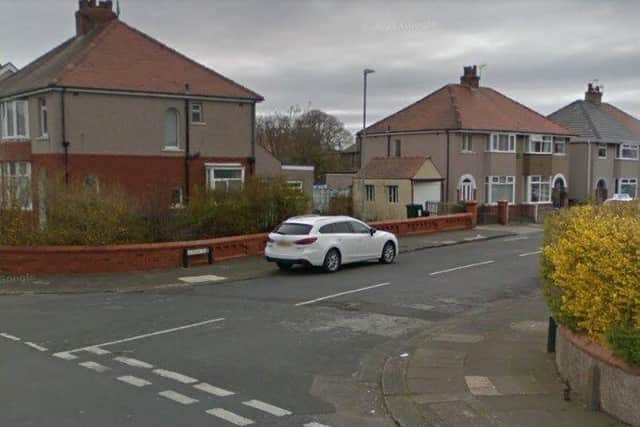

This year’s DfT grant will be boosted by almost £1.9m of improvements to be made as a result of a local project which recycles waste material from the under-construction Samlesbury Enterprise Zone and uses it in the repair of minor roads.
However, the recently-appointed cabinet member for transport and highways, Rupert Swarbrick, warned at the Conservative-run authority’s latest cabinet meeting that he was unable to visit every bit of “really rubbish road” in Lancashire at the growing request of his 83 fellow county councillors.
“I hold my hands up and say I don’t have enough time to go and do that. I will come and look at other stuff where it's appropriate and I’m not making myself inaccessible, [but] what I’m not setting myself [up to do] is to make promises in the field that I can't deliver,” County Cllr Swarbrick explained.
He was responding to concerns raised by Labour opposition group leader Azhar Ali, who claimed - as he has done previously - that there was “political fixing” afoot when it came to prioritising road repairs in Lancashire. County Cllr Ali said he suspected that County Hall’s transport asset management programme (TAMP) was being used as a “decoy” to justify the choices being made.
Advertisement
Hide AdAdvertisement
Hide Ad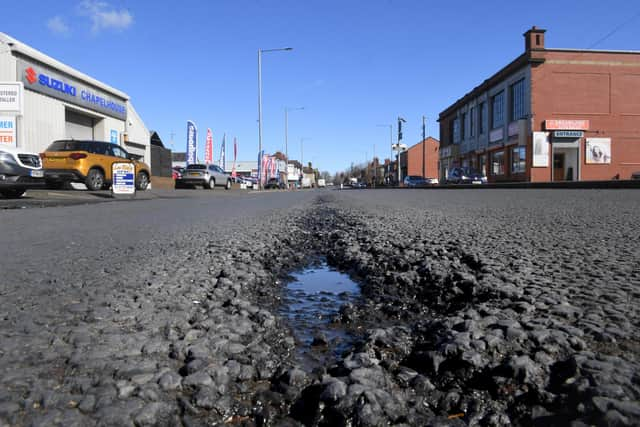

Council leader Phillippa Williamson refuted the suggestion, noting that all of the authority's political groups had gripes over which roads were receiving attention.
County Cllr Swarbrick stressed that the TAMP - which was introduced in 2015, when Labour was in control at County Hall - existed precisely to ensure that the cabinet member of the day could not be accused of “political shenanigans” by favouring particular schemes.
However, he added that there were aspects of the “algorithmic” calculations that underpin the programme that he was yet to get to grips with within his new role - and pledged to “demystify” the policy for all members once he had done so for himself.
The TAMP is based on the principle of ensuring preventive maintenance is prioritised rather than taking a 'worst road first' approach.
Advertisement
Hide AdAdvertisement
Hide AdThe programme is being delivered in phases through until 2030. It initially focussed on the county’s A, B and C routes and has now, in its second phase, turned its attention to unclassified roads, like those in residential areas.
However, major routes do still feature in the annual pre-planned maintenance programme and the policy is designed to ensure that the progress made in its early years is sustained even as the focus shifts. A report to cabinet last September concluded that the authority was “on track” to achieve that aim, but noted that there was “a substantial backlog” of work to be carried out on unclassified highways, according to data from earlier in 2022.
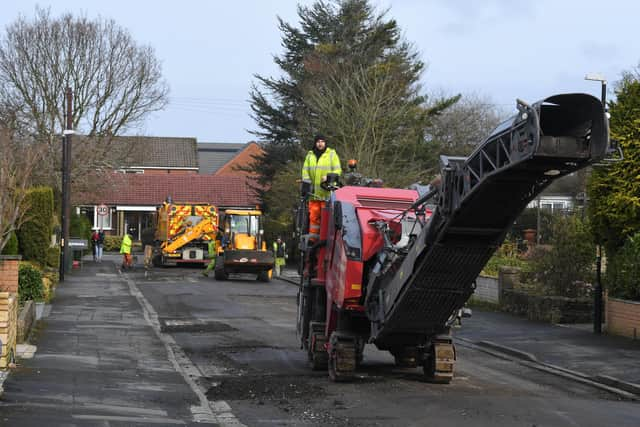

The document also revealed that there was not enough funding available to replace the county’s ageing stock of lampposts and traffic lights at “an appropriate pace” - and that the highest-risk issues among both sets of the vital infrastructure were being dealt with first.
In order to make the money go further, there was to be a focus on replacing the obsolete components of traffic lights, where possible, rather than renewing the lights in full across entire junctions. Investment in this area is, however, being increased this year.
Advertisement
Hide AdAdvertisement
Hide AdMeanwhile, the latest cabinet report highlights the challenges posed by the current rate of inflation, which has resulted in an effective reduction in the funding available for routine maintenance in the year ahead. These include a reduced ability to address the TAMP’s phase 2 repair priorities, particularly on the urban unclassified network, which is currently considered to be “poor” and will likely deteriorate further.
The increased chance of streetlight columns failing - and the resultant risk to the public - is also noted, requiring a move from scheduled streetlamp replacement to column testing in order to ensure safety.
Highways authorities like the county council have a duty to maintain the road network in such a way that it remains “reasonably passable for the ordinary traffic of the neighbourhood [in] all seasons of the year, without danger caused by its physical condition”.
In a statement after the meeting where the maintenance schemes for the next 12 months were agreed, County Cllr Swarbrick said that the cash poured into the county’s main roads in previous years meant that the county council was now able “to spend less to keep them in good condition - and invest more in the smaller urban roads”.
Advertisement
Hide AdAdvertisement
Hide AdHe added: "A recent review of our transport asset management plan (TAMP), which underpins our approach to maintenance, found that 'prevention is better than cure', rather than always focusing on replacing the worst first [and] is the right long-term strategy.
"The evidence for this is that fewer faults are now being found in the A, B and C roads which have been the focus of this strategy over recent years.
"It also means we receive more incentive funding from the Department for Transport, as we can show our approach provides the best value for money.
"However, we also face some really big challenges, as parts of our transport infrastructure are ageing and need to be carefully managed until we can secure the substantial funding needed to replace them.
Advertisement
Hide AdAdvertisement
Hide Ad"We are working hard to identify opportunities to fund this work and will use the robust survey data we have collected to help make Lancashire's case for our share of any extra funding which becomes available for infrastructure improvements."
According to analysis by the Local Government Association this month, the government spent 31 times more per mile on maintaining motorways and A-roads last year than they did on funding councils to repair what the organisation described as “crumbling local roads” and the potholes that plague them.
POTHOLE UNPREDICTABILITY
On top of the scheduled roads maintenance that it carries out every year, Lancashire County Council also has to respond to those potholes that peskily crop up all year round.
The authority generally fixes highway defects only once they are greater than 40mm in depth.
Advertisement
Hide AdAdvertisement
Hide AdAs there is no way of predicting how many potholes will emerge that meet the so-called “intervention criteria”, County Hall can only estimate how much money it will need to spend on unplanned repairs.
According to a report to cabinet members, this year it has set aside £11m for that purpose - £8m of which will come from its wider capital programme, funded by grants in the first instance and borrowing “as a last resort”, with £2m earmarked for structural defects within the £28m government-funded budget for pre-planned work.
At the authority’s general budget meeting last month, an additional £1m was injected into the highway coffers to fix multiple defects on roads which would otherwise have to wait longer for repair.
Separately, £2.2m is set aside in the scheduled repair budget for a “local deterioration fund” focusing on mini-resurfacing schemes which are prioritised according to the number of defects in an area in an attempt to reduce the number repeat visits required to repair individual potholes which could be more efficiently have been fixed in a single cluster. The number of complaints received and claims generated - along with the significance of the route in question - are also factored in to the decisions about which roads should be allocated a share of the fund.
Advertisement
Hide AdAdvertisement
Hide AdThe county council is encouraging residents to report road defects via the Love Clean Streets app and, as of November 2022, it was exceeding all of its targets for the length of time that it should take to repair problems, ranked according to their seriousness. Urgent issues should be attended to within two working days and the least urgent within 20.
However, at a this month's cabinet meeting, Labour opposition group leader Azhar Ali claimed that some members of his party had been told by highways officials at County Hall to “slow down” in their reporting of road faults and to stop sending emails because of the number of messages being received from county councillors raising issues.
“I think that’s unacceptable behaviour - it doesn't matter who runs the council, but officers shouldn't be telling members not to send emails in,” County Cllr Ali said.
The meeting heard that his allegation would be investigated.
Advertisement
Hide AdAdvertisement
Hide AdALL THE ROADS TO BE REPAIRED IN LANCASTER AND MORECAMBE (2023/24)
Bailrigg Lane – surface dressing from the A6, Scotforth Road to property “Lane Ends”
Barley Cop Lane, Skerton – resurfacing from the junction with Slyne Road to house no.94 and from house no.165 to adjacent to the junction with Folly Lane
Barley Cop Lane and Noel Road, Skerton – surface dressing of Barley Cop Lane from house. no.94 to 165 and of Noel Road from Barley Cop Lane to Torrisholme Road
Birkland Barrow Road and Timpenny Road – surface dressing of Birkland Barrow Road from Kirby Lonsdale Road to Timpenny Road; from Timpenny Road to the campsite farm track entrance; and of Timpenny Road from Birkland Barrow Road to the junction with the main road
Borwick Court – resurfacing full length
Advertisement
Hide AdAdvertisement
Hide AdBotton Road – resurfacing from Botton Mill Bridge to Hollinghurst Brow
Burnsall Avenue and Norland Drive, Heysham – resurfacing full lengths of both
Cambridge Road, Morecambe – resurfacing between Alexandra Road and Gardner Road
Grosvenor Road, Heysham – resurfacing full length
Keswick Grove and surrounding roads, Heysham – resurfacing the full lengths of Keswick Grove, Warren Road, Warren Grove and Combermere Road
Advertisement
Hide AdAdvertisement
Hide AdKnowlys Avenue, Heysham – resurfacing full length, including Knowlys Drive
Lathom Grove, Morecambe – resurfacing full length
Malham Close and Birkdale Close, Skerton – resurfacing full lengths of both
Marine Road (A589), Morecambe – resurfacing from Central Drive roundabout to the end of the dual carriageway (southbound only)
Osborne Grove, Morecambe – resurfacing from Ellesmere Road to Acre Moss Lane
Advertisement
Hide AdAdvertisement
Hide AdStansey Avenue, Heysham – resurfacing from Hale Carr Road to the end
Twemlow Parade and Royds Avenue, Heysham – resurfacing Twemlow Parade from Royds Grove to Royds Avenue; and Royds Avenue from Twemlow Parade to Heysham Road
Definitions:
Resurfacing - full replacement of surface
Surface dressing - process of sealing relaid carriageways to protect them from future water damage
Reconstruction - major repair of "moss roads"
Source: Lancashire County Council. The above projects planned for 2023/24 are dependent on final confirmation of the DfT highways maintenance grant for Lancashire County Council and are subject to amendment in the event of the funding received being less than the amount assumed by the authority's cabinet.
Advertisement
Hide AdAdvertisement
Hide AdLANCASHIRE'S ROADS BUDGET IN NUMBERS
£28.8m - in funding, largely for pre-planned maintenance, from the government's highways maintenance grant
£51.9m - estimated minimum amount required per year for routine maintenance to improve overall condition of the road network
101 - planned surface schemes for the year ahead
£3m - amount earmarked for A, B and C roads
£6.8m - amount earmarked for urban unclassified roads
£2.1m - amount earmarked for rural unclassified roads
£2.3m - amount earmarked for streetlamp replacement
Source: Lancashire County Council (figures for 2023/24 financial year)
